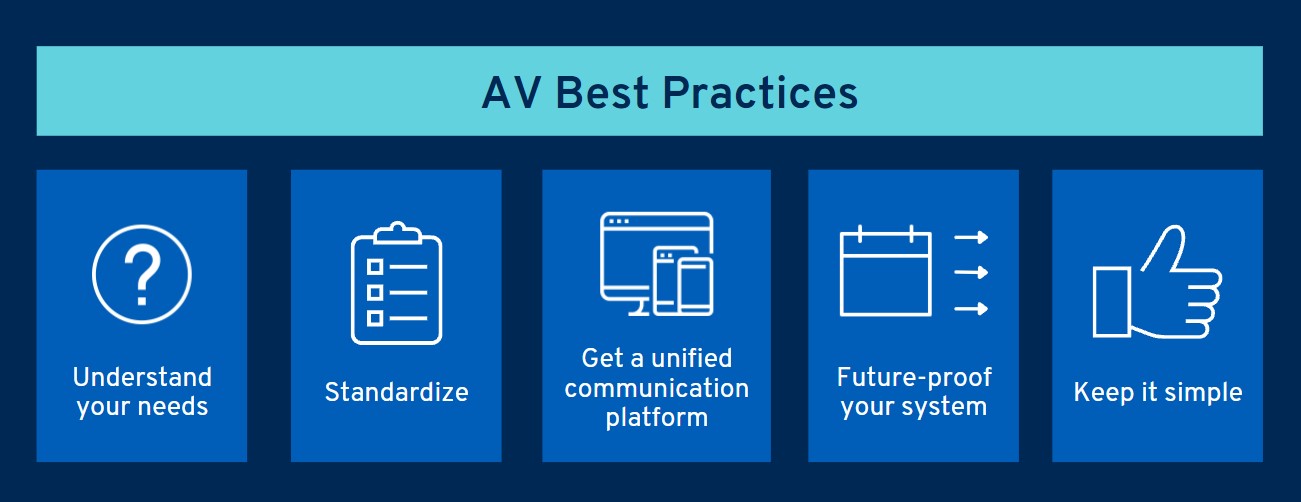For many, the term AV sparks frustrating images of tangled cords and wires, fuzzy audio feedback, and sweaty palms before a big meeting because the technology isn't working. But it doesn't have to be that way. Technology, when used correctly, is meant to streamline, simplify, and elevate collaborative spaces. It's meant to add value and connect people.
So, how do you ensure that your AV technology is reliable and effective? Here's a good start.
Our AV team compiled their list of recommendations and best practices when it comes to approaching your corporate AV needs.
1. Take time to understand your AV needs.
Before jumping right in with a quick fix or flashy start, take the time to consider the following questions:
• What do you like about your current system?
• What do you hate about your current system? What are its pain points?
• Who will use the system? Are they tech-savvy?
• How will they use the space? (Think screen sharing, video conferencing, audio plug in, etc.)
• Does the space post any specific challenges? (Think sound masking, privacy requirements, etc.)
• What is your budget?
• What is your timeline?
Depending on your answers you may find that you should prioritize simple and streamlined technology over the complicated and glitzy.
2. Standardize.
One of the most common AV mistakes we see is disjointed AV technology across an organization. If each one of your meeting rooms is equipped with different technology and experiences, the room for users and technology error is heightened. We recommend that you identify three different types of rooms (say a huddle space, board room, and large training room) and the technology they require. From there, replicate across your organization. Standardizing technology helps enhance and simplify your user experience while also mitigating technology issues for your IT team.
3. Get everyone on a unified communication platform.
With the onset of COVID-19, most organizations have integrated a communication platform into their workforce for remote work collaboration. Ensuring that you have one standard communication platform is vital in facilitating teamwork and collaboration. When it comes to AV, your unified communication platform should sync seamlessly in your meeting spaces so ensure each space is equipped with the equipment needed to plug in and go.
4. Future-proof your system.
While you update your AV technology, make sure to document. Think to yourself, "Does my current AV system enable growth?" If the answer is no, you may have a problem.
5. Keep it simple.
This is our most powerful and most overlooked piece of advice. When it comes to AV, there is a tendency to make spaces more complicated and flashy than necessary. At the end of the day, having a system that works is more important than having a system that has all of the bells and whistles. Be on the lookout for partners or integrators who try to convince you that you need more than you really do, at the end of the day it's best to err on the side of simplicity.

We understand that updating AV technology can be a challenging and annoying venture. We also understand that for many it's a thorn in their side. That's why we're here. If you have any questions on our list above or would like to talk with someone about you’re AV needs, we're here to help!

By Trey Wade
Director of Systems Solutions
Share this Blog Post
Leave a question or comment:





